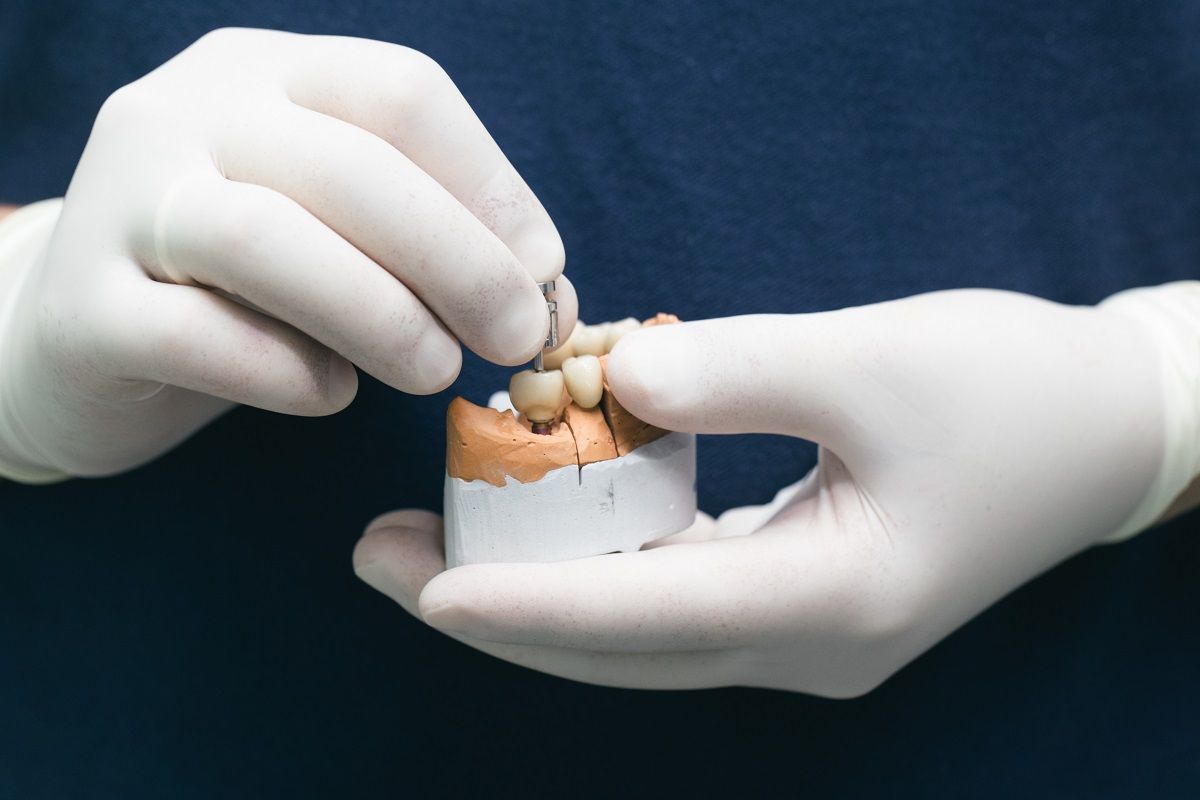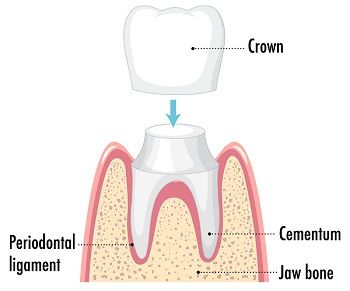

How to care for a temporary dental crown?
A temporary dental crown is shaped like a tooth cap covering a natural tooth or implant until your permanent crown is set. Because temporary crowns are more sensitive than permanent crowns, you should exercise particular caution when flossing or biting while wearing one.
Continue reading to find out why you might need a temporary crown and how to make sure it doesn't crack or come loose before being replaced with a permanent one.
When do you require a temporary dental crown?
A temporary crown is applied when a natural tooth requires a traditional permanent crown. Because it takes several weeks to create a permanent crown to your specifications, your dentist will place a temporary crown until the final one arrives.
A temporary crown is used for the following purposes:
- To protect your natural tooth (or implant site) and the gums
- Allow you to smile confidently without a gap and reduce any tooth or gum sensitivity
- Maintain normal tooth spacing
- Assist you in chewing and eating food
- It helps the dentist determine how the crown will operate
Dentists use a temporary crown to cover an implant, a root canal, or a restored tooth. Moreover, dentists also sometimes use it for a single tooth or a group of teeth.
Some dental offices may have the computer technology and equipment to manufacture a crown in one day, but in most circumstances, a permanent crown will take at least a week or two to create.

How long should a temporary crown be worn?
Your temporary crown will likely remain in place for at least two weeks. The quantity of dental repair required determines the duration of the temporary crown.
Does a temporary dental crown resemble your natural teeth?
Your temporary crown will be comparable in shape and color to your natural teeth. Moreover, your dentist may utilize computer imaging equipment to determine the best condition for your permanent crown. Alternatively, the dentist will take an imprint of your existing teeth to use as a guide when creating the permanent crown.
Your dentist will also ensure that the hue of your permanent crown matches the shade of your other teeth. However, the temporary crown may not be perfect since you only wear it for a few weeks. Furthermore, the color may not match your teeth well due to the materials used.
Can you eat normally?
Dentists use temporary cement to secure your temporary crown. It should be fully operational, allowing you to chew normally. However, your dentist may advise avoiding chewing on hard, rough, or sticky foods because the adhesive does not permanently hold the tooth in place.
Avoiding sugary foods is also a wise idea. There may be a gap between the crown and the gum line with your temporary crown. This indicates that sugar could go into the crown and induce deterioration.
Here are some meals you should avoid when wearing a temporary crown:

- Beef or steak
- Bagels or hard or crusty bread
- Fresh veggies and hard or crunchy fruits, such as raw baby carrots and apples.
- Corn
- Gum chewing
- Popcorn
Also, avoid eating extremely hot or cold, as this may impact how well the cement holds the temporary crown.
How to care for a temporary dental crown?
Taking care of your temporary crown takes a little extra attention. Instead of yanking the floss down, try gently slipping it in. You must be cautious when flossing to avoid dislodging the temporary crown.
You may also need to brush the region more lightly. Maintaining oral hygiene and cleaning the area around your temporary crown is critical.
According to Kenneth Rothschild, a general dentist and a member of the Academy of General Dentistry,
"Temporary crowns are made of relatively soft plastics (ethyl methacrylates, bisacrylics, among others) and should be handled with care."
Since dentists remove the temporary crown within one to three weeks, the weak temporary cement may occasionally fail before your scheduled follow-up visit. Therefore, you should take care of your temporary crown.
Furthermore, if your temporary crown falls off, the best thing to do is call your dentist and schedule an appointment to replace it. Similarly, if you lose your temporary crown, your dentist will almost certainly replace it with another temporary crown.
It is critical not to keep the space in your mouth unfilled, as the tooth or gum beneath the crown may become damaged or infected. It may also break your bite, producing complications with the permanent restoration. Both temporary and permanent Crowns are an investment in oral health and function. Leaving the temporary in place safeguards your investment.
Conclusion
Both temporary and permanent Crowns are an investment in oral health and function. Leaving the temporary in place safeguards your investment.
A temporary crown serves as a temporary replacement until your permanent crown is ready and put into place. It will resemble your natural teeth but not as well-matched as your permanent crown.
Most importantly, a temporary crown is not as strong as a permanent crown; you must exercise caution. Avoid eating hard and sticky foods, and floss and brush lightly.
Contact your Lafayette dentist, Dr. Massood Darvishzadeh, DDS at Lafayette Dental Group, to learn about temporary dental crowns.
Resource:
Which type of Dental Crown is for me?
*This media/content or any other on this website does not prescribe, recommend, or prevent any treatment or procedure. Therefore, we highly recommend that you get the advice of a qualified dentist or other medical practitioners regarding your specific dental condition*
Services
Contact Us
3466 Mt Diablo Blvd., Suite C207
Lafayette, CA 94549
2026 © Lafayette Dental Group | All rights reserved | Powered by: Vigorant, Inc.
